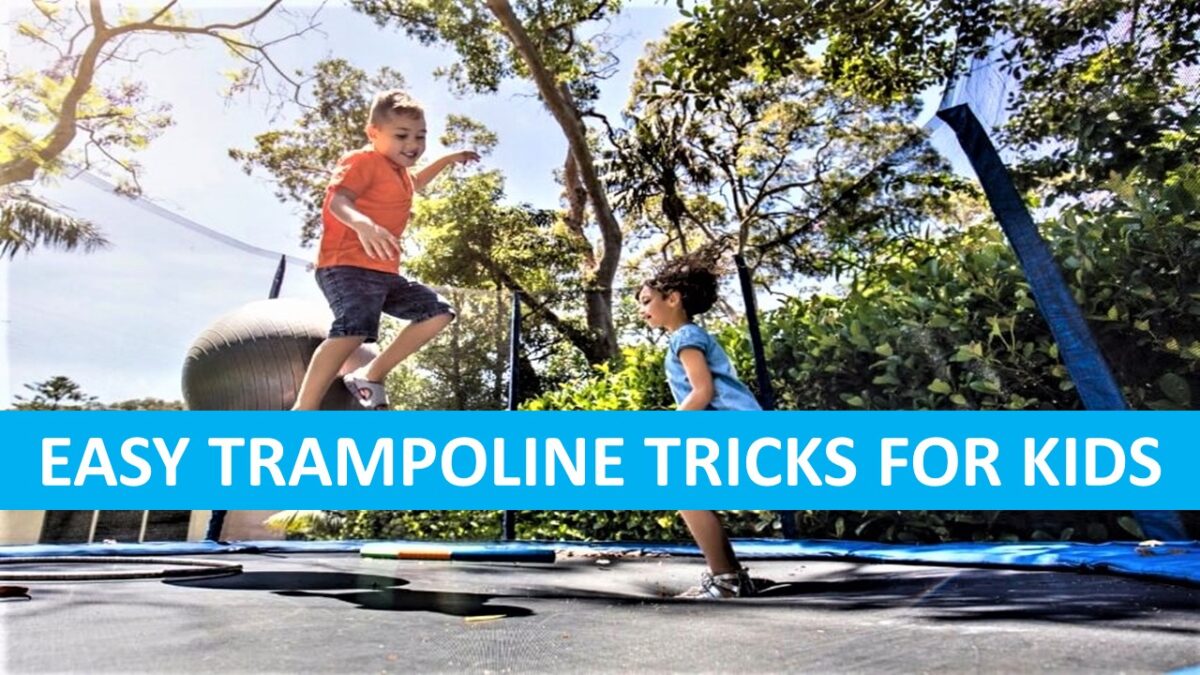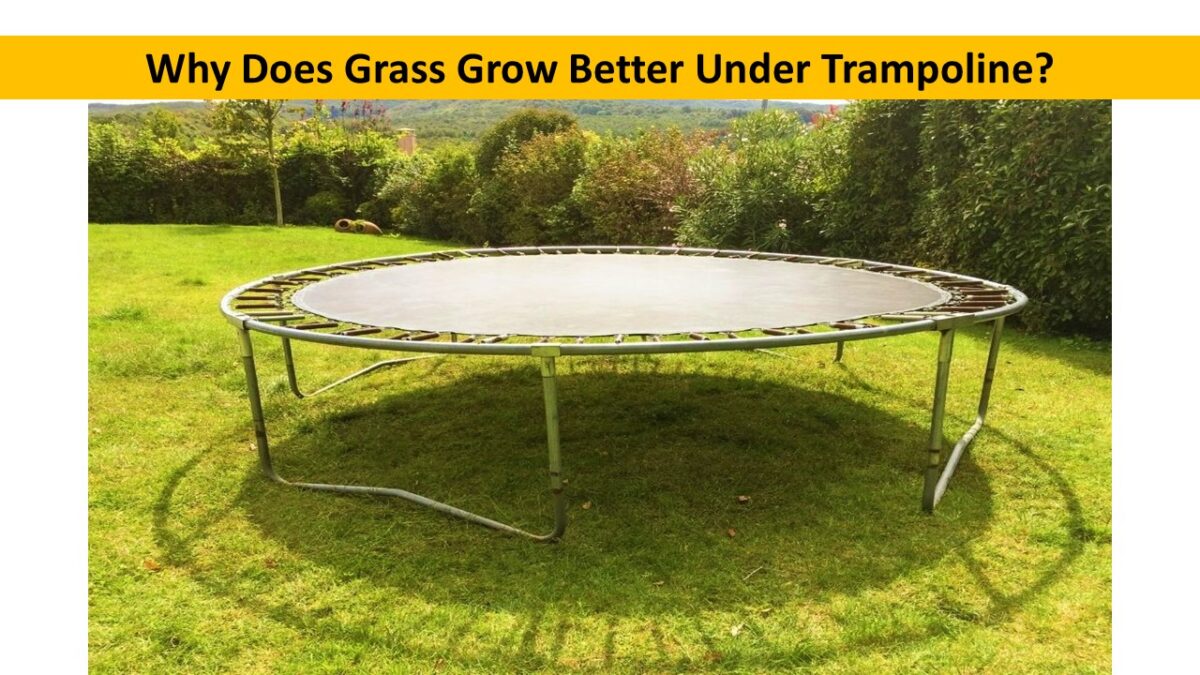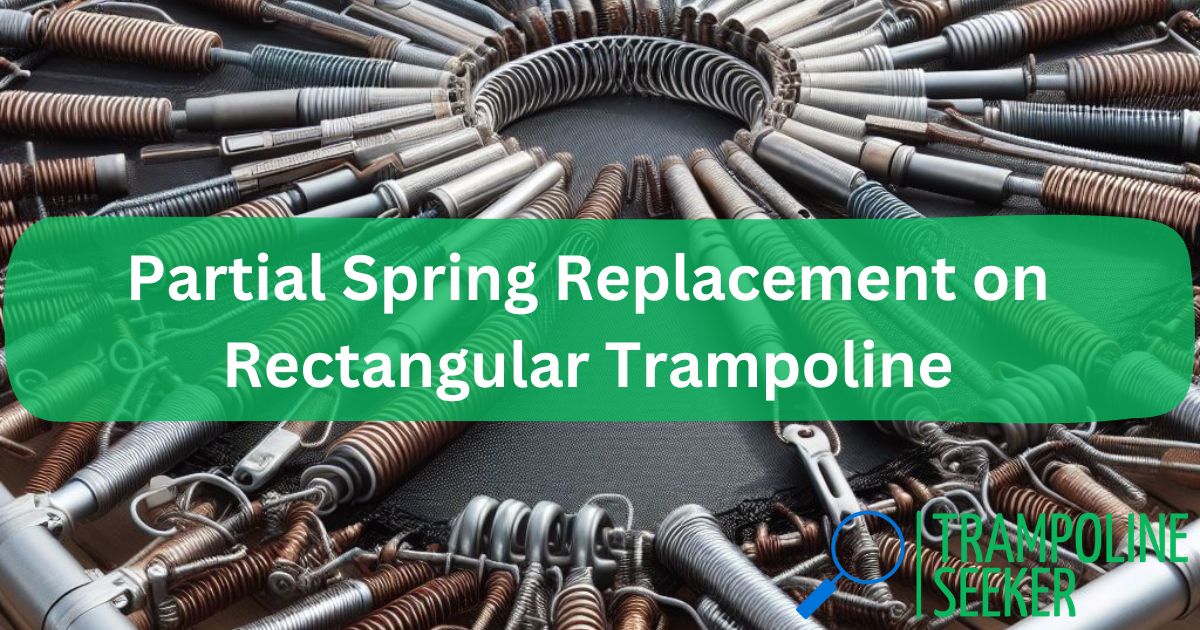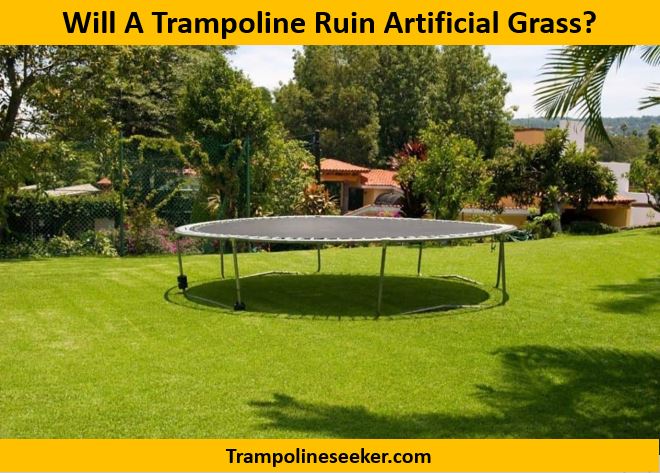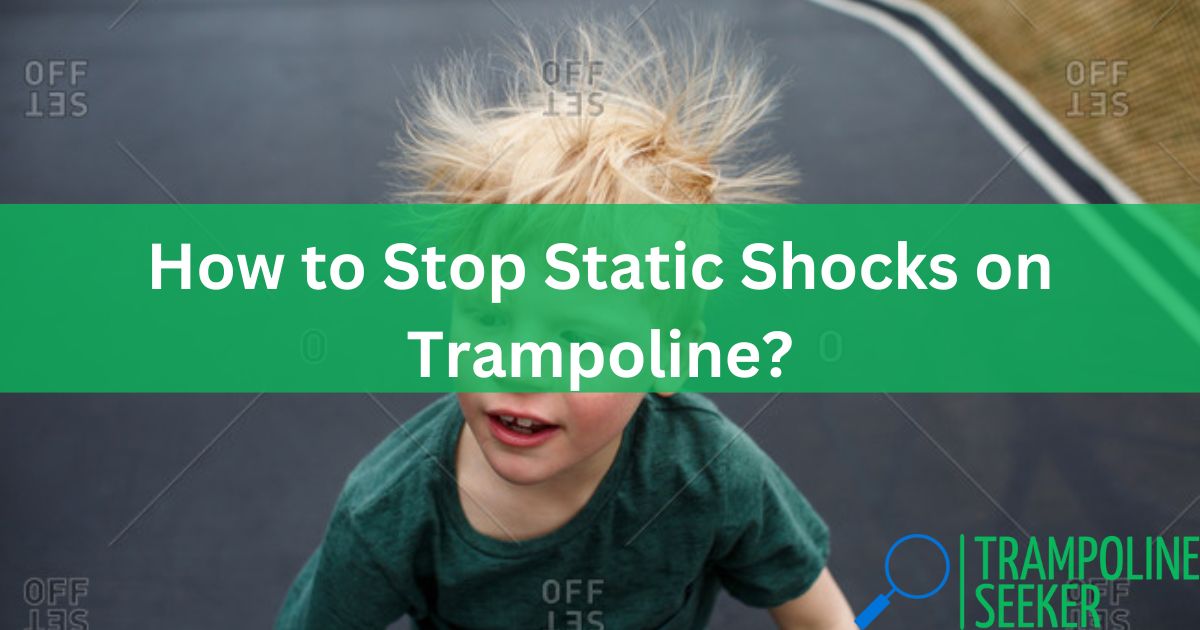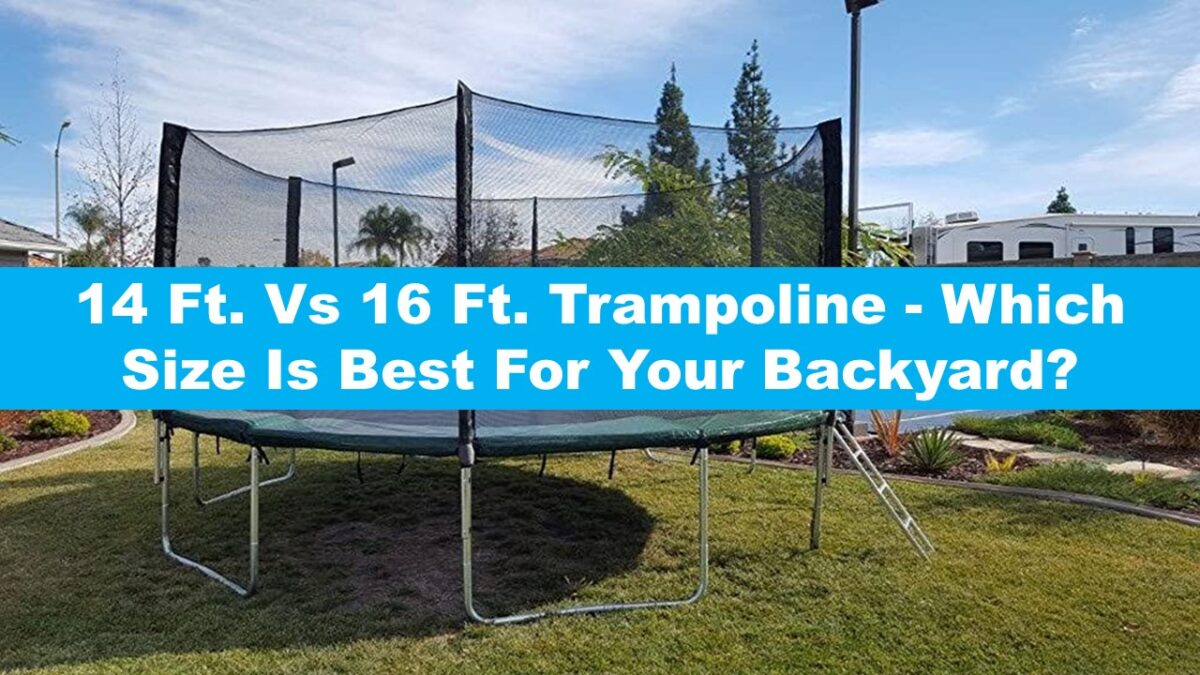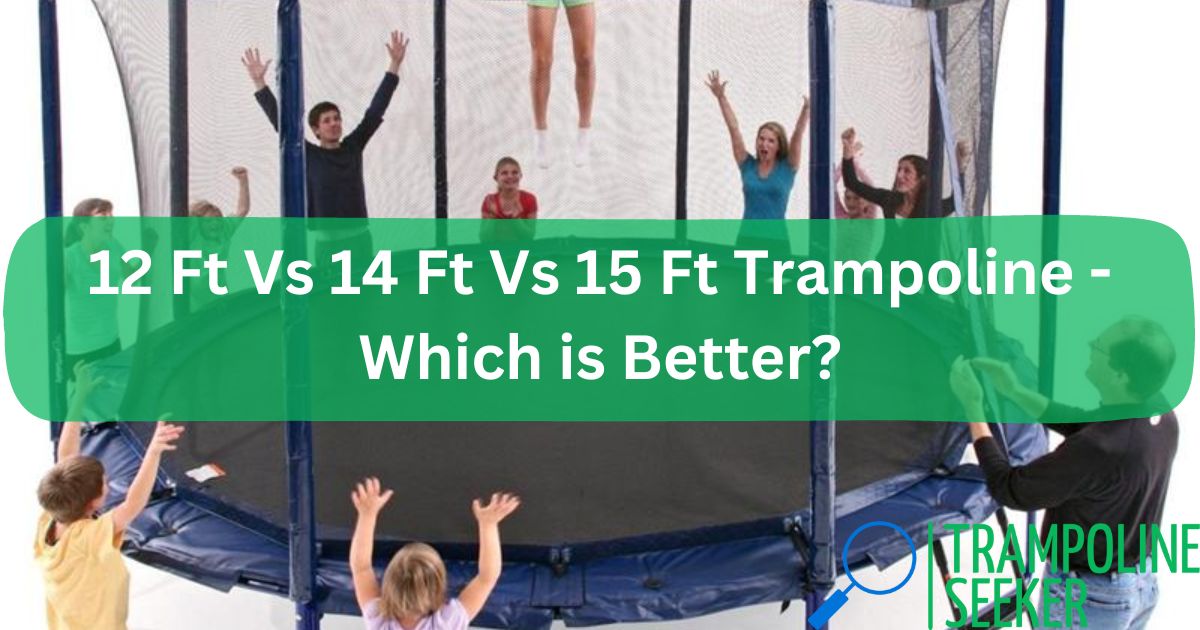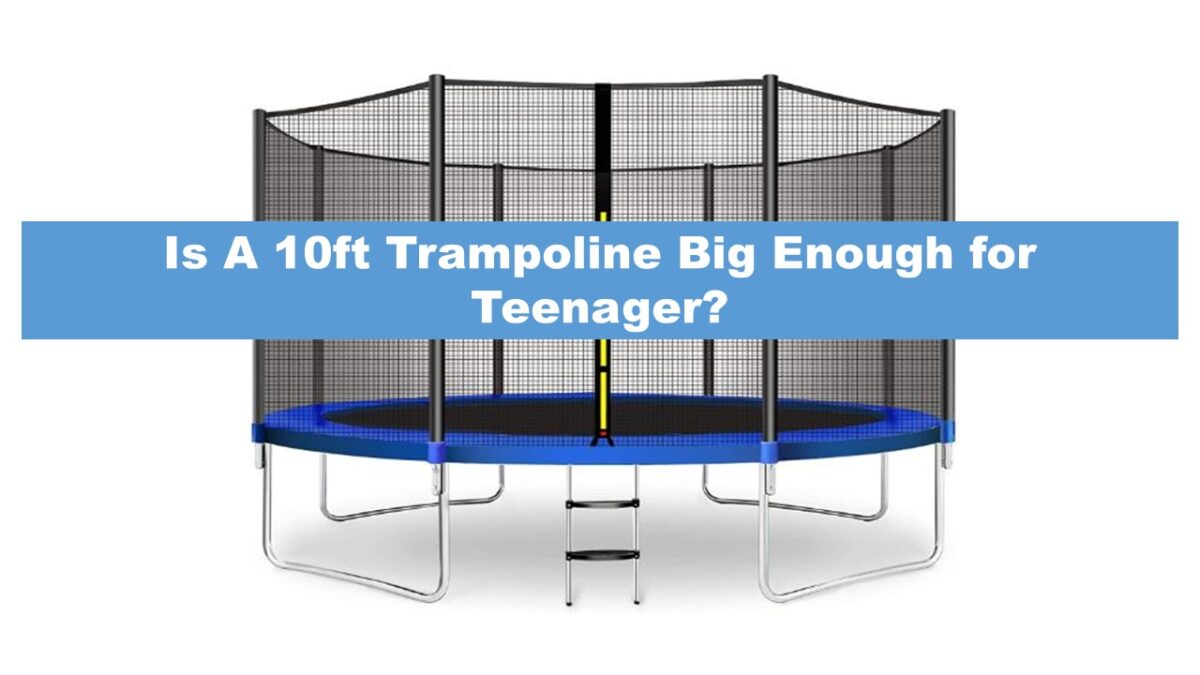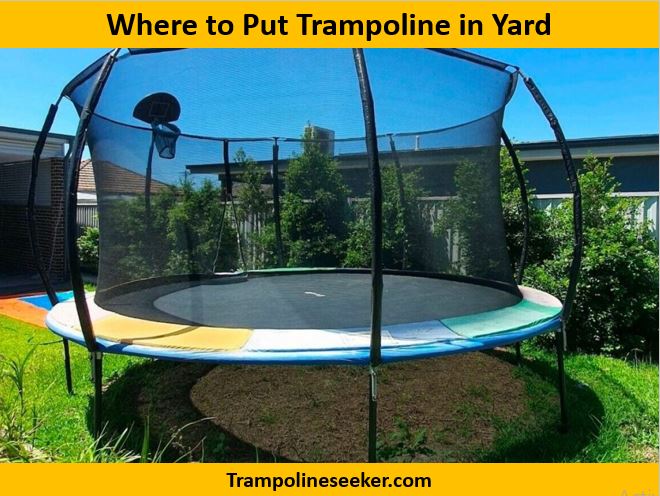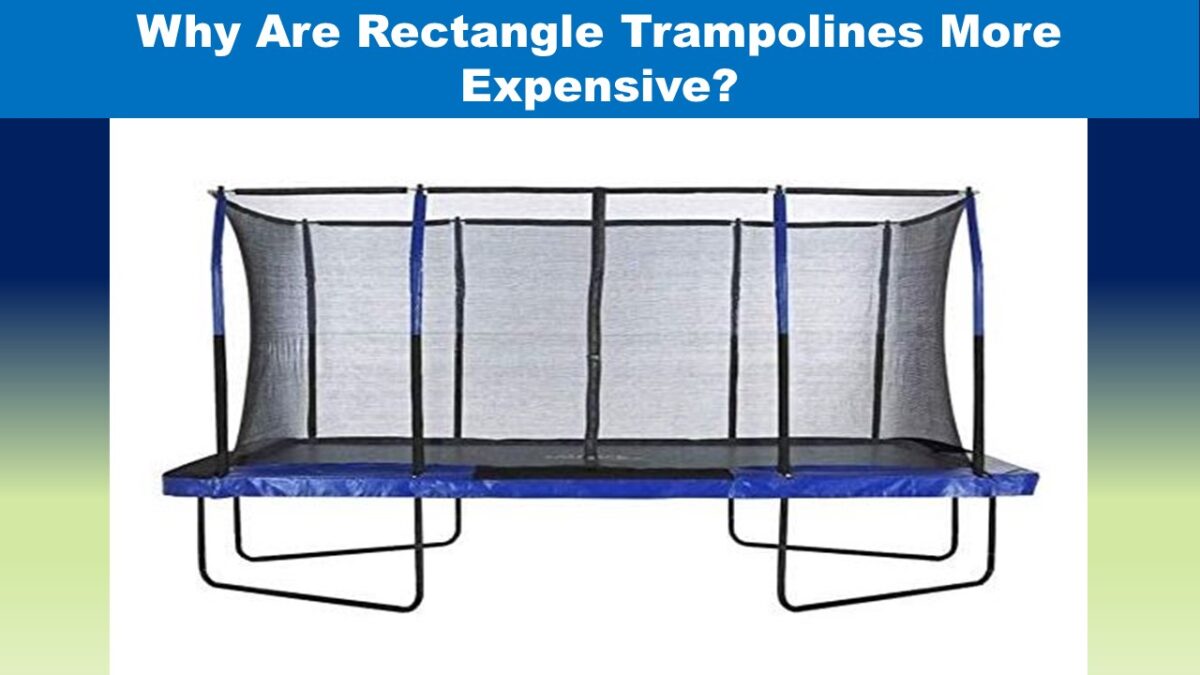As a trampoline lover and backyard jumper for over 20 years, I often get asked “Why is my trampoline not bouncy?”.
Trampolines can lose their bounce for a few common reasons. The most likely causes are:
- The trampoline is too large for the jumper’s weight. Small kids can’t generate enough force on big trampolines.
- Springs are low quality or worn out. Weak or broken springs prevent the mat from recoiling properly.
- Mat is sagging in the middle due to damaged springs or stretching. This robs energy from the jumper.
- Trampoline is overloaded past the weight limit. This overextends the springs and mat.
- Frame pad deteriorates and sags onto the mat’s surface.
In this comprehensive guide, I’ll share my tips and tricks for diagnosing and fixing a trampoline with poor bounce. You’ll learn what causes trampolines to lose their bounce and how to restore the fun.
What Makes a Trampoline Bouncy?
With years of experience jumping on trampolines of all shapes and sizes, I’ve come to appreciate the mechanics behind what makes a trampoline bouncy. When your trampoline has that spring and liveliness to it, it transforms your backyard into a personal playground where you can experience the joy and thrill of defying gravity. But what exactly gives a trampoline its signature bounce?

1. The Trampoline Frame
The trampoline frame acts as the anchor and foundation for the bouncing system. Trampoline frames come in different shapes like round, rectangular, oval, and square. The sturdy steel or aluminum frame has holes around the circumference where the springs attach on one end and to the jumping mat on the other.
The frame bears the brunt of the force from jumping and needs to be robust enough not to bend or flex too much. Trampoline frames are either welded together or bolted using t-sockets and curved rails. High-quality trampoline frames use thicker and more rigid steel tubing sizes around 1.5 to 2 inches in diameter.
2. Trampoline Springs
The unsung heroes of trampolines are the springs! Trampoline springs provide the recoil action that gives you that upward thrust when jumping. The springs attach to the frame on one end and to the mat edge using hooks on the other.
When you land on the trampoline, your weight causes the springs to stretch out and extend towards the ground. As you jump up, the springs then snap back into their original shape, pulling the mat tight again. This rapid recoil action slingshots you up into the air for that signature bounce feeling.
The quality and condition of the springs have the biggest impact on bounce. Factors like the steel gauge, coil width, anti-rust coating all affect the durability and recoil strength of springs. Heavier gauge steel and wider coil widths equate to more powerful springs. I’ll cover more spring specifics later on.
3. Trampoline Mat
The mat or jumping surface needs to be made of a reinforced fabric that is lightweight yet strong enough to handle repetitive impact without tearing. Trampoline mats are made using woven polypropylene that is UV treated to resist sun damage.
The mat should not stretch or sag when in use. It needs to remain taut and flat to provide an even jumping platform. The mat edge has grommets where the springs attach using hooks on the other end. Quality mats have extra stitching around the grommets for durability.
This trifecta of a sturdy frame, high-quality springs, and durable mat gives a trampoline its bounciness and lets jumpers experience the thrill and freedom that comes with defying gravity!
Why is Your Trampoline Not Bouncy?
If you feel that your trampoline has lost its mojo and that coveted bounce, don’t worry – the situation can likely be remedied! Trampolines can lose their bounciness for a variety of reasons. By methodically checking different components, you can diagnose what is causing the poor bounce.
Here are the most common culprits behind a trampoline lacking bounce:
1. Incorrect Trampoline Size
One of the most common reasons for poor bounce is when the trampoline size does not match the jumper’s weight and skill level. For smaller kids under 100 pounds, a full-sized 14 or 15-foot trampoline may not have enough rebound. The springs and mat were designed for heavier users.
The same holds true when teen or adult jumpers use a smaller recreational trampoline meant for toddlers. Their added weight and advanced skills require a competition-grade trampoline built for power.
The fix: Get a trampoline size appropriate for the primary user’s weight and skill level. Use sizing charts to pick the ideal trampoline diameter or length. Sell or give away the ill-fitted trampoline.
2. Low-Quality Springs
As the source of a trampoline’s rebound, poor quality springs can sap that bounce feeling. Common signs of bad springs are:
- Small diameter steel – Thinner steel wire flexes too much.
- Narrow coil width – Doesn’t provide enough recoil strength.
- No weather coating – Leads to premature rusting.
- Hooks too thin – Cause them to bend and break.
Replacing worn-out springs with thicker, galvanized ones with wide coils and sturdy hooks restores the bounce.
The fix: Determine the coil diameter and gauge of your existing springs. Upgrade to better springs using my spring selection guide later in this article.
3. Sagging Trampoline Mat
When trampoline mats lose their tautness and sag in the middle, it kills the bounce. Jumpers end up landing on an uneven surface causing them to bottomed out. Typical causes include:
- Broken or missing springs – Removes tension on mat.
- Stretched out mat fabric – Weathering causes it to deform.
- Mat not installed tight enough – Creates sagging from the get-go.
The fix: Replace any broken springs. Swap an old mat for a new one. Properly tension mat during install.
4. Excess Weight Limit
Trampolines are designed for a maximum user weight capacity or limit. Exceeding this threshold can overextend the springs and mat leading to a dead bounce. The limits are around:
- 150-200 lbs for kid trampolines.
- 250 lbs for adult recreational trampolines.
- 450+ lbs for competition trampolines.
Using a trampoline over the weight limit stresses both the springs and mat causing premature wear.
The fix: Use a trampoline rated for your weight range. Upgrade to a model with a higher weight capacity and heavier-duty springs.
5. Deteriorated Frame Pad
While it doesn’t affect bounce directly, a tattered frame pad leads to reduced jumping space. As the foam pad deteriorates, chunks of the pad can sag onto the mat taking away valuable bounce surface area near the edges.
The fix: Measure the trampoline frame diameter and order a new frame pad custom-fitted for your model.
6. Ruptured Spring
Trampoline springs do occasionally break, especially if rusted or weakened from overextension. Even a single busted spring throws off the uniform tension needed for that consistent bounce. The takeoff and landing feel uneven.
The fix: Replace any damaged springs right away. Check for signs of deterioration on other springs.
7. Excessive Rusting
Rust is the natural enemy of steel trampoline springs. Rust causes the steel to oxidize, forming a weaker crystalline structure. As rust flakes away, it leads to pits and cracks that act as stress concentrators. The springs lose their structural integrity and ability to recoil properly.
The fix: For surface rust, remove it and coat with Rust-Oleum. Heavily corroded springs need replacing.
How to Make a Trampoline Bouncier?
If your trampoline is still bouncing but seems to have lost some of its mojo, there are ways to coax back more bounce through tuning techniques. Let’s go over methods for reviving a trampoline lacking punch.
1. Inspect and Replace Springs
The first thing is to examine all of the springs. Look for any that are stretched out, rusted or broken. Stretched springs have gaps between the coils when not extended. Rust corrodes and weakens the steel. Brittle and broken springs lose their recoil capability.
Replace any faulty springs with new ones that match the diameter, gauge, coil width and number of coils. Having a few weaker springs hampers the uniform bounce performance.
I recommend replacing springs in batches. If more than 10% look faulty, replacing the whole set maintains consistent tension and bounce.
2. Crossover Springs
You can nearly double the tension on the trampoline mat by using a crossover spring pattern. This entails crisscrossing the springs rather than attaching them directly across from each other.
The springs connect to the mat and frame at a diagonal orientation rather than straight across. This pre-stretches the springs more than the normal pattern for extra tautness on the mat.
The crossover pattern works great for rectangular trampolines. You may need to widen the spring holes on round trampoline frames to angle the hooks into the crossover diagonal slots.
3. Tighten the Mat
If your trampoline mat shows signs of stretching out, you can remove the excess slack by tightening the mat. This restores the drum-like tension that prevents mat bounce dampening.
To tighten, detach the springs and have someone pull the mat rim toward the frame while you reattach and tension the springs. For round trampolines, use the crossover spring method above to really crank down the mat tension.
This mat tightening technique can help prolong the life of an aging trampoline mat for a few more years.
4. Use Trampoline Enhancers
Rather than reinventing the wheel, consider tried-and-true trampoline accessories designed to increase bounce. Here are two worthwhile options:
5. Spring Pull-N-Hook Bungee Kit
This kit includes 8 bungee cords that attach to the trampoline frame and mat edge. The bungees provide auxiliary tension that augments the standard springs. Reviews praise the kit for breathing new life into old trampolines.
6. Springfree Trampoline Booster Pad
This pad fastens onto the Springfree rod-based trampoline mat to add several inches of pre-compression. The thick pad pushes down the mat to achieve the “sweet-spot” tension for optimal bounce.
Choosing the Best Replacement Trampoline Springs
When it’s time to swap in a fresh set of springs to revive your trampoline’s bounce, use these tips to select optimal replacement springs:
1. Spring Type
There are 3 main types of trampoline springs:
Standard Coil Springs – These affordable galvanized steel springs come in a range of diameters and lengths. They offer good bang-for-buck but have a shorter lifespan than premium springs.
Gold Medal Springs – This brand pioneered the first high-performance trampoline springs. They use a proprietary alloy and tempering process for unrivaled recoil properties. The premium springs boast up to 3X the cycles before needing replacing.
Leaf Springs – Leaf or v-springs offer an alternative design using stacked steel plates oriented vertically. They have a higher lift capacity than coil springs but cost more.
For most trampolines, high-quality galvanized coil springs offer the best blend of performance and affordability.
2. Spring Size
Replacement springs need to match the same specifications as the originals:
Wire Diameter – Measured in mm or gauge size. Common sizes are 2.8mm, 3.0mm, or 3.2mm wire. Thicker is better.
Coil Width – Distance across a coil loop typically 20mm to 35mm. Wider coil = more power.
Coil Number – Count the number of coils when new. Range from 6 to 10 coils.
Fully Extended Length – Note the maximum length with hooks. Avoid springs that are too long.
Spring Color – Many brands color code springs by size. Match the original color.
Using an accurate spring size avoids overextending them and causing premature damage.
3. Total Spring Number
It’s essential to replace your springs using the manufacturer’s recommended number of springs:
- Round trampolines – Size chart lists total springs for diameter.
- Rectangular trampolines – Formula is 5.5 springs per square foot of mat.
Having fewer springs than recommended puts undue stress on each one. More springs than needed can also backfire by creating too much combined tension.
Use the exact spring quantity suggested for ideal bounce performance.
4. Anti-Rust Spring Coating
Seeking out springs galvanized or powder coated for weather protection helps them maintain bounce over seasons of use. Bare steel springs rust quickly when exposed to the elements.
Zinc galvanizing uses a thin zinc coating to prevent surface oxidation. Good for occasional outdoor use.
A thick polyester powder coating better withstands full-time outdoor trampoline use. The flexible coating won’t crack or peel.
Spending a few extra bucks for coated springs reduces rust-related downtime and bounce loss.
Trampoline Spring Replacement Best Practices
Once you have your new set of high-performance springs, use these tips for smooth installations:
1. Remove Old Springs Completely
Detach all of the old springs from the mat and frame before installing any new ones. Trying to mix old and new springs together causes tension mismatches.
Wear thick gloves when removing rusted springs to avoid cuts. Discard any unusable springs to avoid confusion.
2. Install One Spring at a Time
Attach each new spring to the mat and frame before moving onto the next one. Repeating this sequence maintains even tension across the mat.
Leave no more than 2-3 unattached springs between those already installed. This prevents overstressing the installed springs.
3. Start and End At Opposite Points
When installing springs, begin by attaching springs 1 and 30 at opposite ends for rectangular trampolines. For round trampolines, go halfway around from 1 to 30.
This ensures the mat lifts evenly. Finishing where you started balances the tension.
4. Use Trampoline Spring Tool
A spring installation tool makes attaching the springs much easier and safer. The tools grip the spring securely as you hook it into the mat grommet and frame hole.
The added leverage lets you tension the springs using body weight rather than brute grip strength.
Proper spring installation technique maximizes the longevity of your new springs and keeps bounce consistent year after year. Let’s recap everything we learned about troubleshooting trampolines with poor bounce:
Conclusion
As an avid trampolinist, I fully understand the disappointment that comes from a trampoline lacking its characteristic bounce. But in most cases, you can restore the freedom and thrill of soaring skyward again.
The key is methodically inspecting each trampoline component to diagnose what is causing the performance loss.
Mismatched sizing, low-quality springs, a sagging mat, excessive weight or rust damage are common culprits. Making strategic upgrades and replacements revives the bounce your trampoline was designed for.
With this comprehensive guide’s tips for evaluating and fixing flat trampolines, you can reclaim the backyard fun and replace frustration with hours of bouncing bliss once again!
Articles You May Like to Read:



